Masala Incense Sticks
 By the word "masala" we mean the incense is created in a way where natural ingredients such as balsam and a complex combination of oils and herbs are integrated together to form a 'dough' like mixture. This mixture is then applied on bamboo stick and lightly coated with sandalwood powder. This masala method consumes lot of time and it is quite expensive to produce than perfumed incense, the result is far better incense which burns very slowly and the after aroma can remain for several days. By the word "masala" we mean the incense is created in a way where natural ingredients such as balsam and a complex combination of oils and herbs are integrated together to form a 'dough' like mixture. This mixture is then applied on bamboo stick and lightly coated with sandalwood powder. This masala method consumes lot of time and it is quite expensive to produce than perfumed incense, the result is far better incense which burns very slowly and the after aroma can remain for several days.
Masala incenses are created by dry ingredients, while charcoal incenses contain liquid scents. Moreover, masala incenses have several subgroups such as:
Masala
Masala is a Hindi word that means "spice mixture". It is usually used when referring to curries or other food dishes. Masala incenses are made by mixing several solid scented ingredients into a paste and then applying that paste onto a bamboo core stick. These incenses commonly contain little or no liquid scents.
Durbars
Durbars are a sub-group of masala incense. They normally contain ingredients completely unfamiliar in the West and contain very intricate scents. Durbars are usually very slow-burning and are quite pleasant and spicy in scent. They contain both solid and liquid perfumes in a binder which never quite dries out, making the incense sticks soft to the touch.
Champas
Champas are a sub-group of durbars. They have a natural ingredient native to India named as "halmaddi". Halmaddi is a grey semi-liquid resin which is extracted from the Ailanthus Malabarica tree. It smells like the flowers of the plumeria tree. Plumeria flowers are also known as champa flowers in India. Halmaddi is hygroscopic that means it absorbs moisture from the air. This can cause champa incenses to have a wet feeling to them. Moreover, Champa incenses are one of the favorable incenses in India.

Dhoops
It also another masala sub-group. They are an extruded incense, lacking a core bamboo stick. Many dhoops have very intensify scents and produce lot of thick smoke when burned. The most well-known dhoop is probably Chandan Dhoop. It contains a high percentage of Sandalwood.
A proper and systematized procedure of incense-making first began in India. Although in Vedic it is mention that the use of incense for removing odors and creating a pleasurable smell. In addition, the modern system of incense-making was likely created by the medicinal priests of the time. Thus, modern, organized incense-making is essentially connected to the Ayurvedic medical system in which it is embedded.
We manufacture, supply and export all types of masala incense, masala incense sticks, masala agarbatti, masala dhoopbatti, masala incense cones, and other incense products. Contact us to buy or for more information on any types of masala incense products.
|


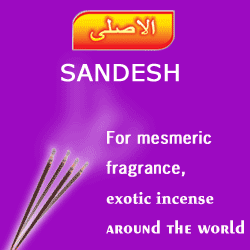

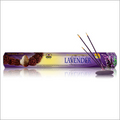
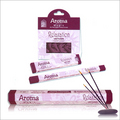
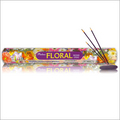
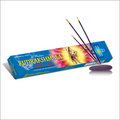
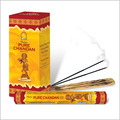
 By the word "masala" we mean the incense is created in a way where natural ingredients such as balsam and a complex combination of oils and herbs are integrated together to form a 'dough' like mixture. This mixture is then applied on bamboo stick and lightly coated with sandalwood powder. This masala method consumes lot of time and it is quite expensive to produce than perfumed incense, the result is far better incense which burns very slowly and the after aroma can remain for several days.
By the word "masala" we mean the incense is created in a way where natural ingredients such as balsam and a complex combination of oils and herbs are integrated together to form a 'dough' like mixture. This mixture is then applied on bamboo stick and lightly coated with sandalwood powder. This masala method consumes lot of time and it is quite expensive to produce than perfumed incense, the result is far better incense which burns very slowly and the after aroma can remain for several days.
